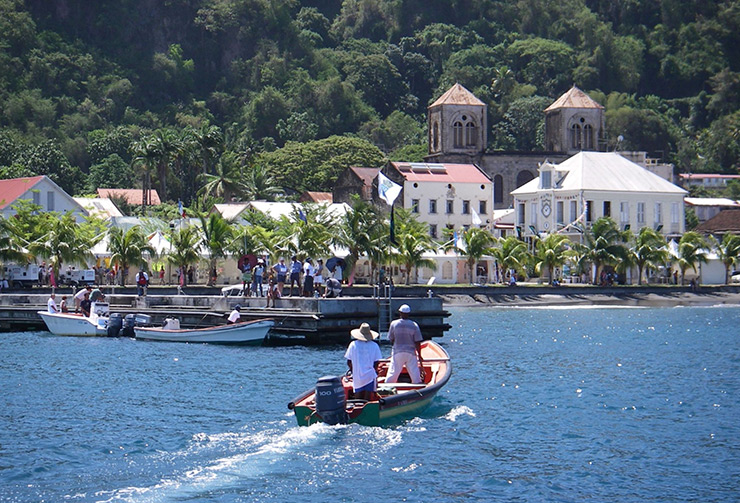PHOTOS: A small fishing boat arriving in Saint Pierre harbor, Martinique; credit Jean Nathalie
Martinique
The volcanic geology of Martinique has produced magnificent black-sand beaches along with white-sand beaches. A charming small town and perhaps, RumFest, will be among each day’s activities.
History
Since 1635, the island has followed French slavery, sugar plantations, and Creolization.
Beaches
The many white sand beaches are counterbalanced with fabulous black sand beaches at Anse Noire.
Attractions
Saint Pierre sits in a curved bay bordered by a gray sand beach, the perfect landmark.
Eco-Travel
In 1902, nearly 40,000 people perished after the Mount Pelee eruption, leaving only 2 survivors.
Zouk Fever
Slang for the word “party” in Creole, is one of the world’s most sensual dance rhythms for men & women.
Music
This charming French island is known for its influential forms of Afro-Creole-Caribbean music.
Travel Tips
Major celebrations occur during Carnival, Ash Wednesday, RumFest, Victory Day, and Slavery Abolition Day.
